Abstract
Multiple primary cancer of the breast and ovary were investigated as part of a survey being undertaken at the Birmingham and West Midlands Regional Cancer Registry. Population-based data relating to 17,756 registrations for breast and 3470 for ovarian cancer between 1950 and 1964 were analysed. On the basis of person-years at risk and incidence rates for the Region (1960-1962), an increased risk of a second primary tumour in the ovary was observed in patients diagnosed with a first primary in the breast before 45 years of age (O = 8; E = 1.83; P less than 0.001). No excess was found in patients diagnosed after 45 years of age (O = 15; E = 17.06). In patients with an index tumour of the ovary, the observed number of second primary tumours of the breast was not significantly different from the expected number (O = 19; E = 12.95). Complementary analysis (a combined assessment for the 2 sites) showed that the development of a first primary at either site before 45 years of age carried a 2.8-fold risk of a second primary tumour at the other site (O = 9; E = 3.21; P less than 0.01). After 45 years of age no increased risk was found (O = 32; E = 28.63). Over all ages a 1.3-fold risk was observed (O = 42; E = 31.54; P less than 0.05). No evidence of subfertility was found in the 9 patients in the high-risk premenopausal group who developed the 2 tumours. The results are more consistent with an aetiology of early exposure to an external carcinogen than with one of abnormal hormone production.
Full text
PDF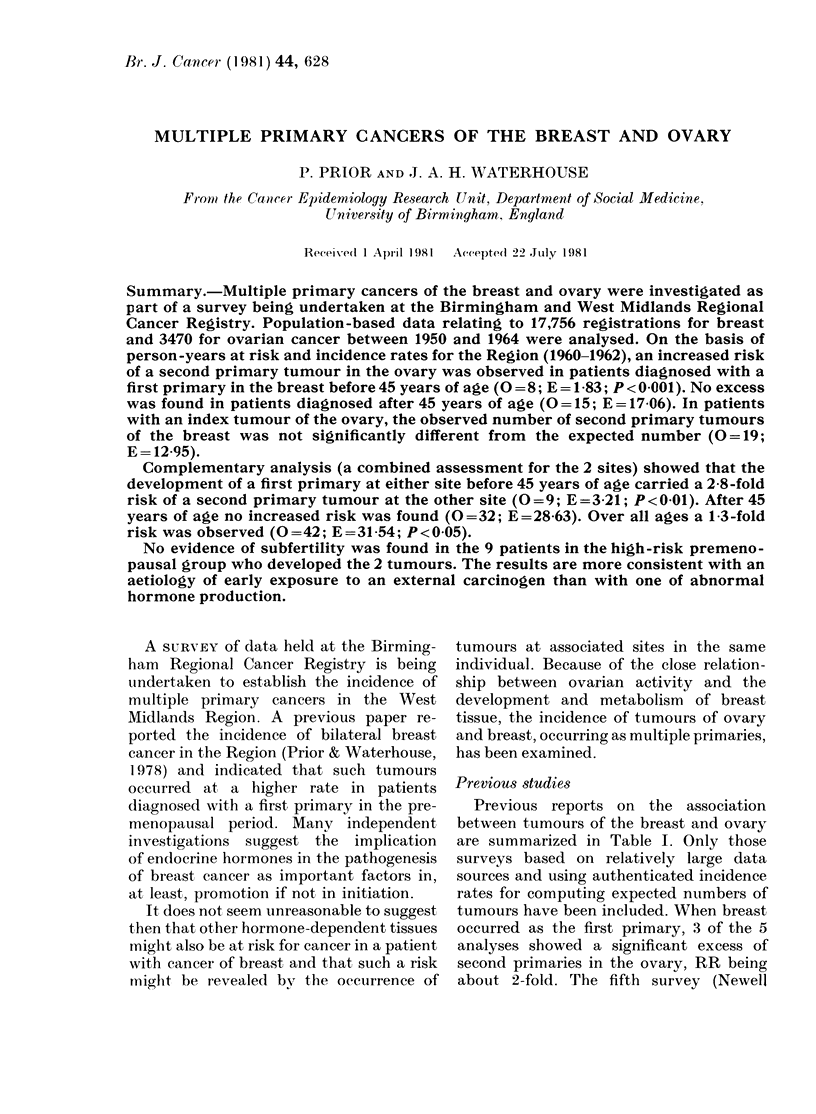
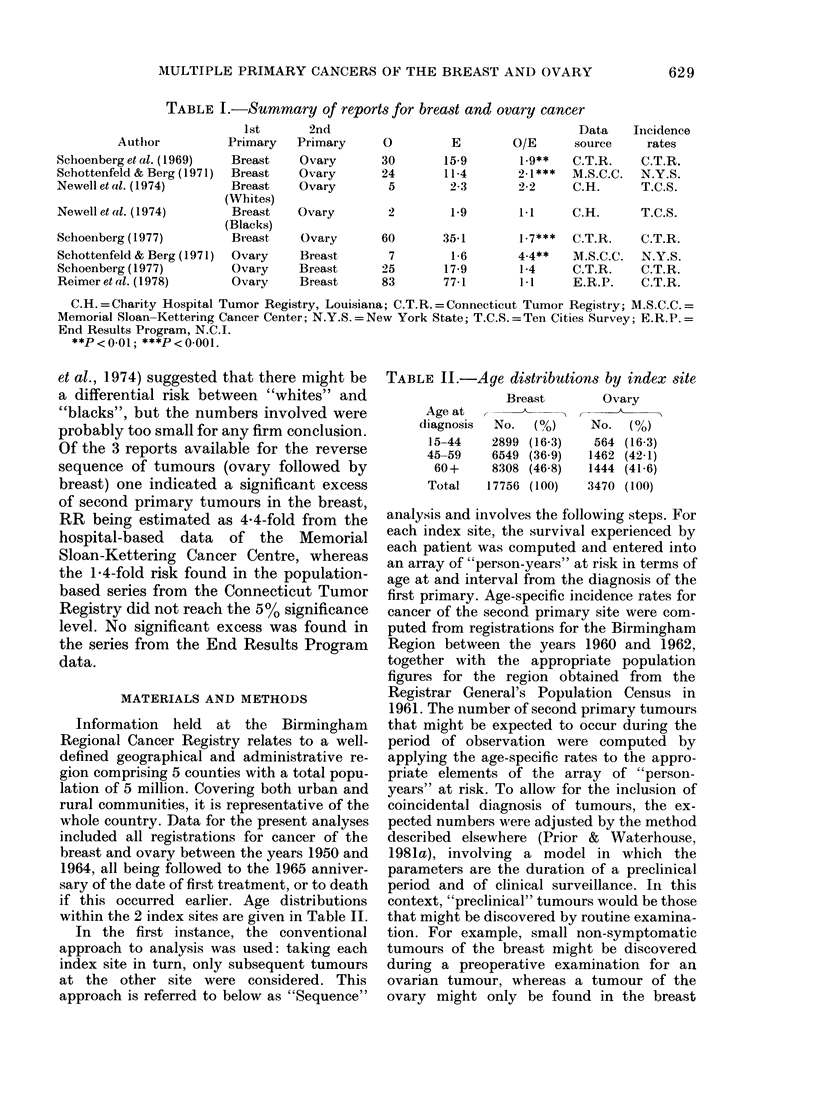
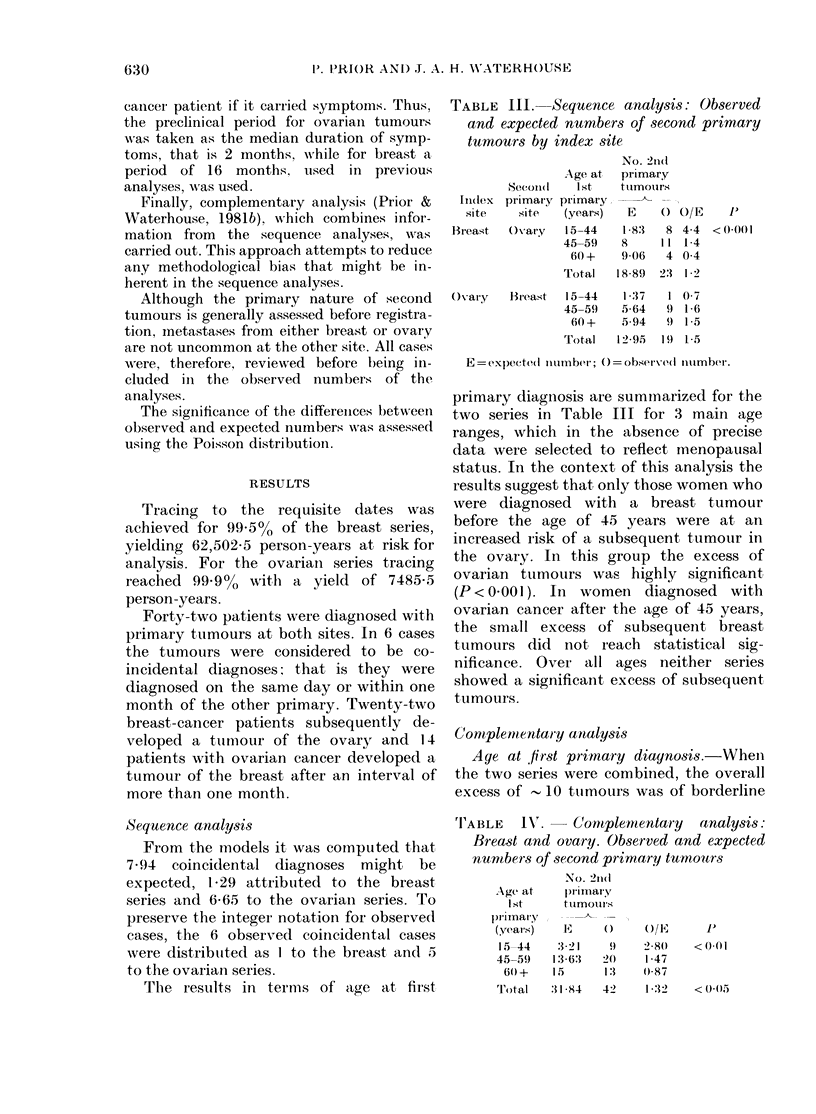
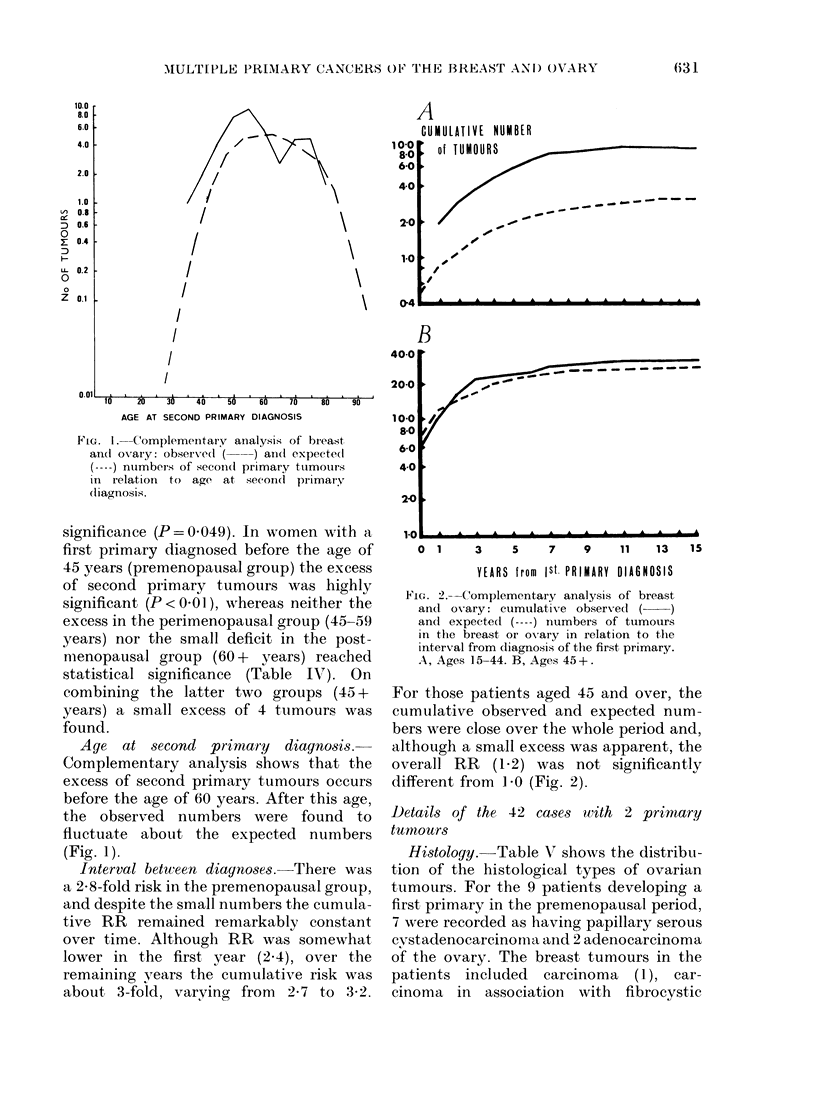
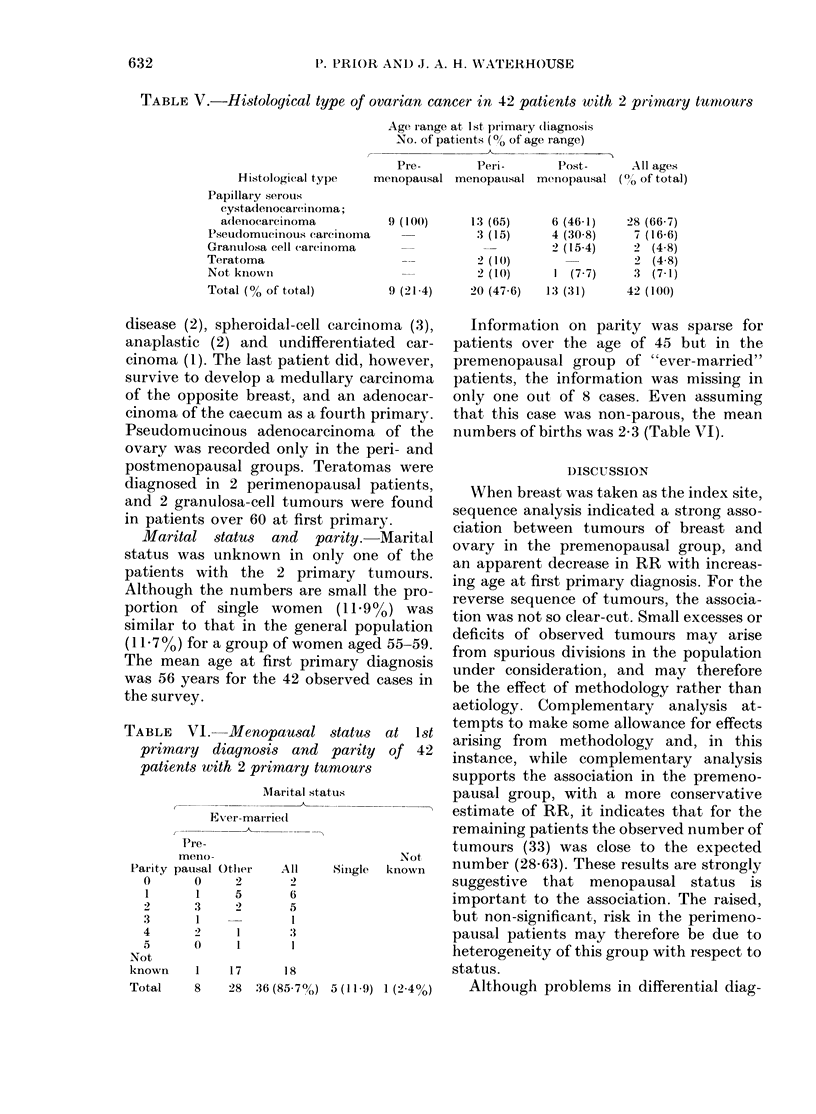
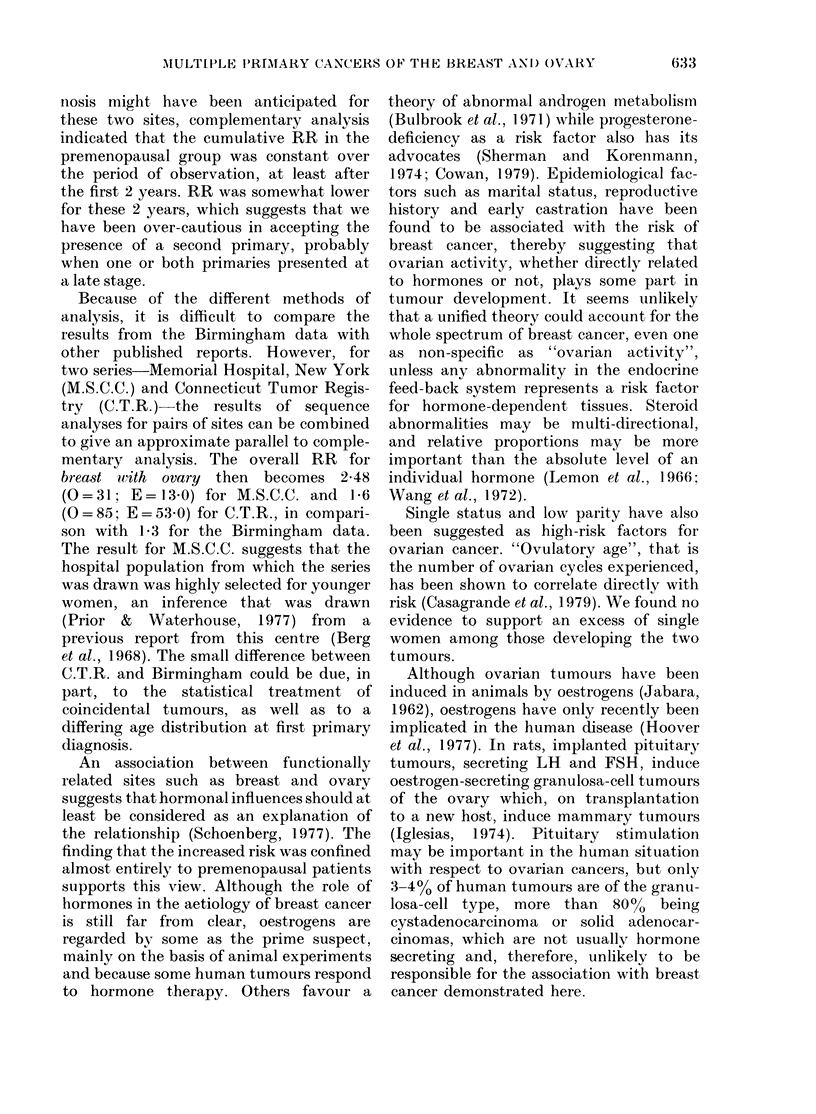
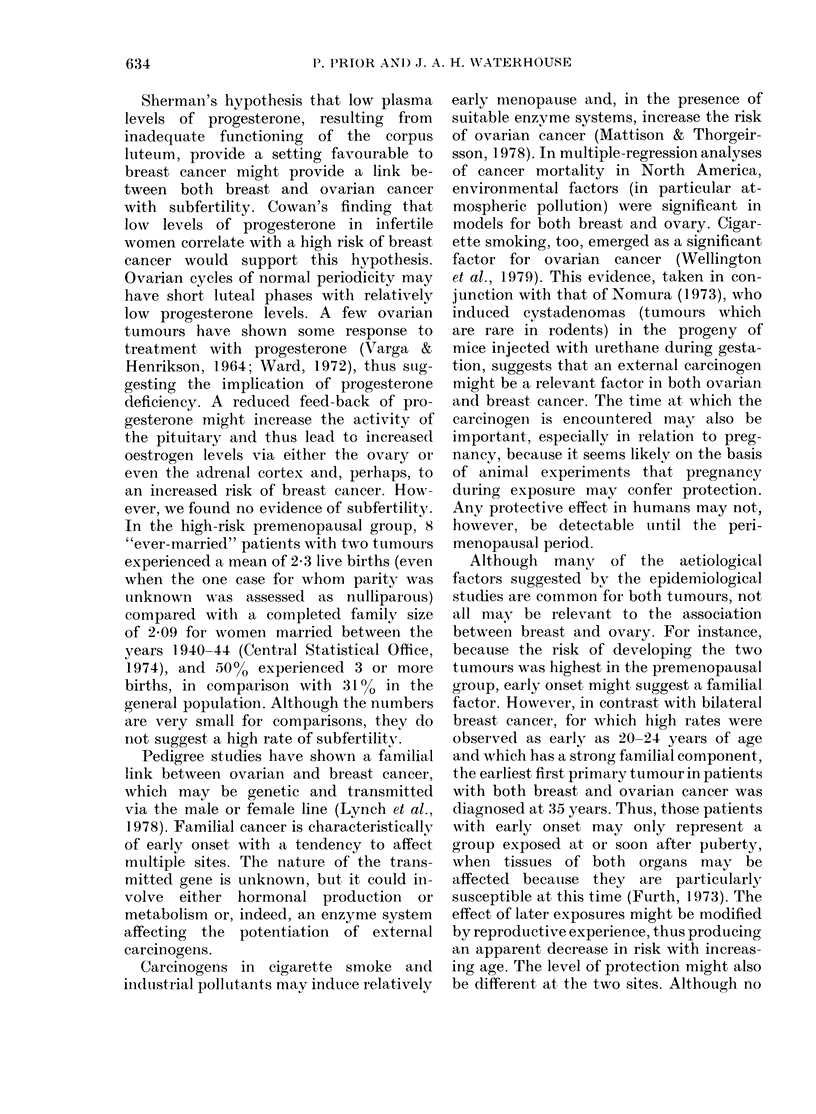
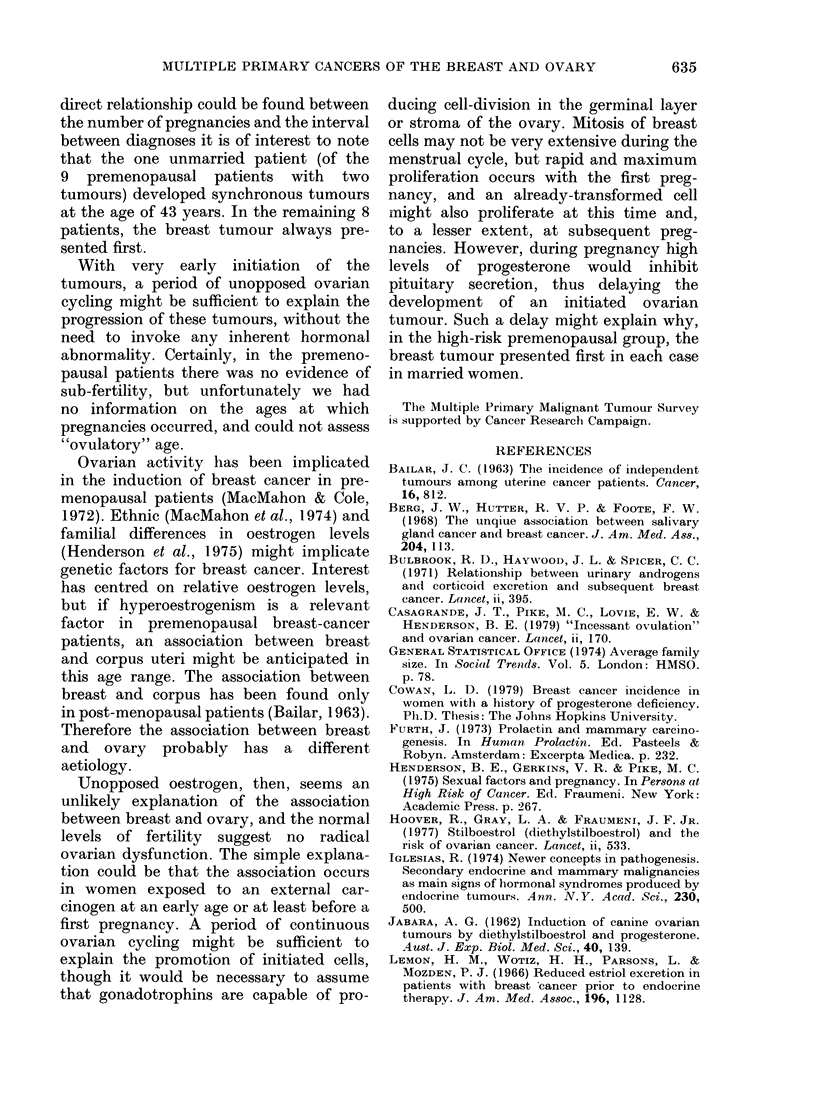
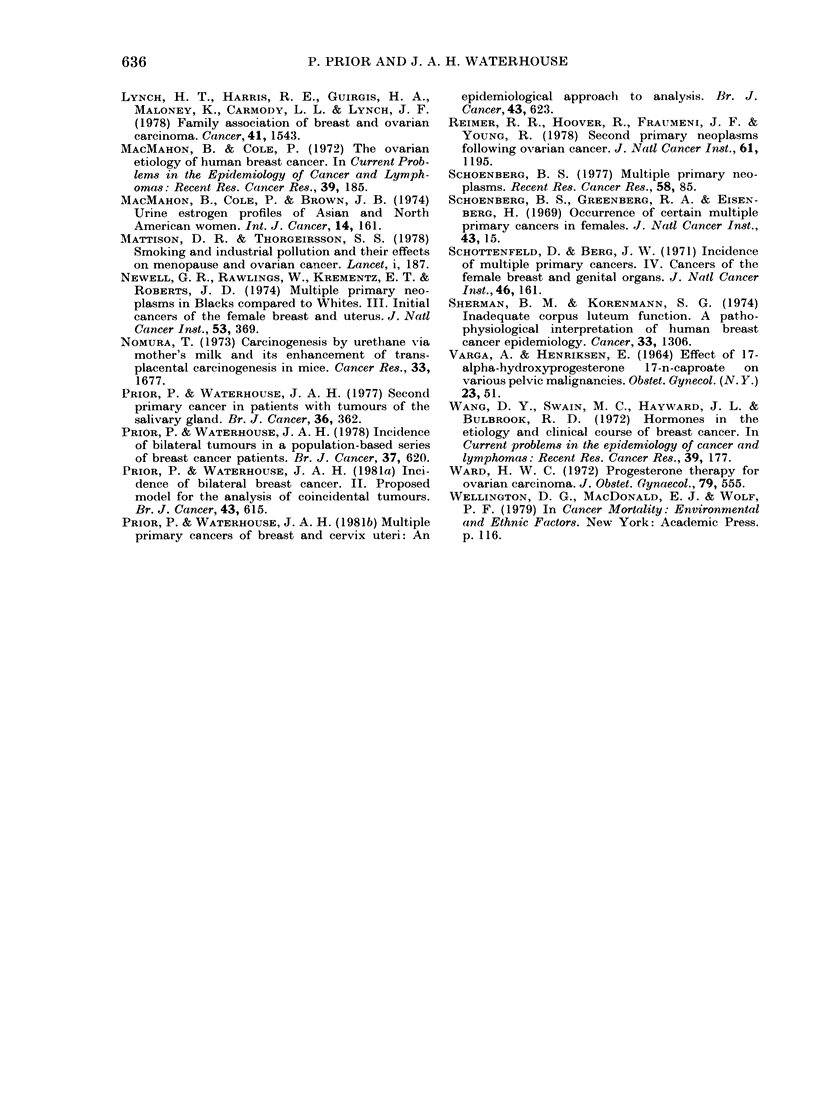
Selected References
These references are in PubMed. This may not be the complete list of references from this article.
- Bulbrook R. D., Hayward J. L., Spicer C. C. Relation between urinary androgen and corticoid excretion and subsequent breast cancer. Lancet. 1971 Aug 21;2(7721):395–398. doi: 10.1016/s0140-6736(71)90113-9. [DOI] [PubMed] [Google Scholar]
- Casagrande J. T., Louie E. W., Pike M. C., Roy S., Ross R. K., Henderson B. E. "Incessant ovulation" and ovarian cancer. Lancet. 1979 Jul 28;2(8135):170–173. doi: 10.1016/s0140-6736(79)91435-1. [DOI] [PubMed] [Google Scholar]
- Hoover R., Gray L. A., Sr, Fraumeni J. F., Jr Stilboestrol (diethylstilbestrol) and the risk of ovarian cancer. Lancet. 1977 Sep 10;2(8037):533–534. doi: 10.1016/s0140-6736(77)90667-5. [DOI] [PubMed] [Google Scholar]
- Iglesias R. Newer concepts in pathogenesis. Secondary endocrine and mammary malignancies as main signs of hormonal syndromes produced by endocrine tumors. Ann N Y Acad Sci. 1974;230:500–507. doi: 10.1111/j.1749-6632.1974.tb14485.x. [DOI] [PubMed] [Google Scholar]
- JABARA A. G. Induction of canine ovarian tumours by diethylstilboestrol and progesterone. Aust J Exp Biol Med Sci. 1962 Apr;40:139–152. doi: 10.1038/icb.1962.17. [DOI] [PubMed] [Google Scholar]
- Lemon H. M., Wotiz H. H., Parsons L., Mozden P. J. Reduced estriol excretion in patients with breast cancer prior to endocrine therapy. JAMA. 1966 Jun 27;196(13):1128–1136. [PubMed] [Google Scholar]
- Lynch H. T., Harris R. E., Guirgis H. A., Maloney K., Carmody L. L., Lynch J. F. Familial association of breast/ovarian carcinoma. Cancer. 1978 Apr;41(4):1543–1549. doi: 10.1002/1097-0142(197804)41:4<1543::aid-cncr2820410444>3.0.co;2-y. [DOI] [PubMed] [Google Scholar]
- MacMahon B., Cole P., Brown J. B., Aoki K., Lin T. M., Morgan R. W., Woo N. C. Urine oestrogen profiles of Asian and North American women. Int J Cancer. 1974 Aug 15;14(2):161–167. doi: 10.1002/ijc.2910140204. [DOI] [PubMed] [Google Scholar]
- MacMahon B., Cole P. The ovarian etiology of human breast cancer. Recent Results Cancer Res. 1972;39:185–192. [PubMed] [Google Scholar]
- Mattison D. R., Thorgeirsson S. S. Smoking and industrial pollution, and their effects on menopause and ovarian cancer. Lancet. 1978 Jan 28;1(8057):187–188. doi: 10.1016/s0140-6736(78)90617-7. [DOI] [PubMed] [Google Scholar]
- McKusick V. A., Weilbaecher R. G., Gragg G. W. Recessive inheritance of a congenital malformation syndrome: unilateral absence deformity of leg and congenital cataracts. JAMA. 1968 Apr 8;204(2):113–118. [PubMed] [Google Scholar]
- Newell G. R., Rawlings W., Krementz E. T., Roberts J. D. Multiple primary neoplasms in blacks compared to whites. 3. Initial cancers of the female breast and uterus. J Natl Cancer Inst. 1974 Aug;53(2):369–373. doi: 10.1093/jnci/53.2.369. [DOI] [PubMed] [Google Scholar]
- Nomura T. Carcinogenesis by urethan via mother's milk and its enhancement of transplacental carcinogenesis in mice. Cancer Res. 1973 Jul;33(7):1677–1683. [PubMed] [Google Scholar]
- Prior P., Waterhouse J. A. Incidence of bilateral tumours in a population-based series of breast-cancer patients. I. Two approaches to an epidemiological analysis. Br J Cancer. 1978 Apr;37(4):620–634. doi: 10.1038/bjc.1978.92. [DOI] [PMC free article] [PubMed] [Google Scholar]
- Prior P., Waterhouse J. A. Multiple primary cancers of breast and cervix uteri: an epidemiological approach to analysis. Br J Cancer. 1981 May;43(5):623–631. doi: 10.1038/bjc.1981.92. [DOI] [PMC free article] [PubMed] [Google Scholar]
- Prior P., Waterhouse J. A. Second primary cancers in patients with tumours of the salivary glands. Br J Cancer. 1977 Sep;36(3):362–368. doi: 10.1038/bjc.1977.201. [DOI] [PMC free article] [PubMed] [Google Scholar]
- Prior P., Waterhouse J. A. The incidence of bilateral breast cancer: II. A proposed model for the analysis of coincidental tumours. Br J Cancer. 1981 May;43(5):615–622. doi: 10.1038/bjc.1981.91. [DOI] [PMC free article] [PubMed] [Google Scholar]
- Reimer R. R., Hoover R., Fraumeni J. F., Jr, Young R. C. Second primary neoplasms following ovarian cancer. J Natl Cancer Inst. 1978 Nov;61(5):1195–1197. doi: 10.1093/jnci/61.5.1195. [DOI] [PubMed] [Google Scholar]
- Schoenberg B. S., Greenberg R. A., Eisenberg H. Occurrence of certain multiple primary cancers in females. J Natl Cancer Inst. 1969 Jul;43(1):15–32. doi: 10.1093/jnci/43.1.15. [DOI] [PubMed] [Google Scholar]
- Schottenfeld D., Berg J. Incidence of miltiple primary cancers. IV. Cancers of the female breast and genital organs. J Natl Cancer Inst. 1971 Jan;46(1):161–170. [PubMed] [Google Scholar]
- Sherman B. M., Korenman S. G. Inadequate corpus luteum function: a pathophysiological interpretation of human breast cancer epidemiology. Cancer. 1974 May;33(5):1306–1312. doi: 10.1002/1097-0142(197405)33:5<1306::aid-cncr2820330515>3.0.co;2-#. [DOI] [PubMed] [Google Scholar]
- Wang D. Y., Swain M. C., Hayward J. L., Bulbrook R. D. Hormones in the aetiology and clinical course of breast cancer. Recent Results Cancer Res. 1972;39:177–183. [PubMed] [Google Scholar]
- Ward H. W. Progestogen therapy for ovarian carcinoma. J Obstet Gynaecol Br Commonw. 1972 Jun;79(6):555–559. doi: 10.1111/j.1471-0528.1972.tb14200.x. [DOI] [PubMed] [Google Scholar]


